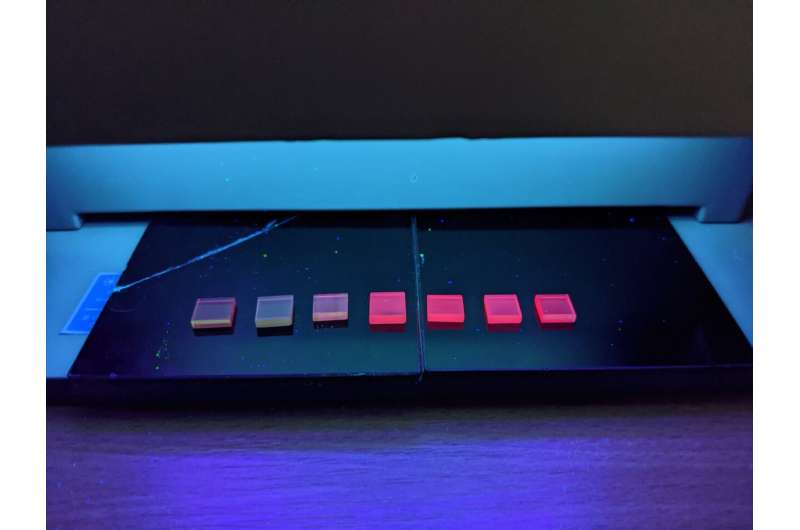Use of glass ceramics in greenhouse lamps facilitate plants' growth

Bright pink lights are used for providing sufficient lighting to house plants. Similar lamps are also used by farmers in greenhouses. Still, specialists in photophysiology argue that such lamps do not provide all the light that plants need. Scientists from ITMO in collaboration with their colleagues from Tomsk Polytechnic University have developed light sources from ceramics with the addition of chrome—the light from such lamps offers not just red but also infrared (IR) light, which is expected to have a positive effect on plants' growth. The research results are now published in Optical Materials.
Growing vegetables, fruit and berries in huge greenhouses rather than in open fields is becoming more common. In such facilities, plants are protected from hail, droughts and chill. However, farmers have to compensate for the lack of natural sunlight in such greenhouses. Advanced agricultural facilities use light diodes for this purpose: They consume little energy, emit bright light and can be easily set up in a greenhouse. The light they emit is pink, which is produced by simultaneous use of blue and red diodes.
"Scientists have determined that such lighting isn't optimal," says Anastasia Babkina, a lab assistant at the Faculty of Photonics and Optical Information. "Thing is, a red diode lights in the range of about 650 nanometers, and its spectrum is very narrow, similar to that of a laser. Plants, however, absorb red and IR light better in the range that's a bit more than 650 nanometers, which people can barely see. So you see, this means that we use the light that's more comfortable for humans and not optimal for plants."
So scientists have sought a material for light diode lamps that produce light in a wider spectrum, including the IR range. A group of researchers from ITMO and Tomsk Polytechnic University took up this task. Classical red light diodes use materials based on manganese and europium compounds. The crystals of this chemical element make the diode emit at the wavelength of about 650 nanometers, making the light red, and jointly with the emission of the blue diode—pink.
"We decided not to use a different crystal, but glass-ceramics," says Anastasia Babkina. "This is a transitive material between glass and crystal. What's the difference? We have to specifically grow crystals, whereas glass is synthesized by molding, and it can be produced quickly and in large amounts in any shape you need. The drawback is that glass is fragile. For this reason, we take glass and begin to slowly crystallize it so that it doesn't lose transparency. As a result, we get glass with microscopic crystals inside that are invisible to the eye. Such a material is more sturdy, has better luminescent properties, and is called glass ceramics."
Chrome is added to glass ceramics at the production stage: This gives the material a pink tone that allows it to produce red and IR light at the same time. There are two potential applications for the new material.The first is to mill it to obtain microparticles that can be used to produce a new type of light diode. This offers great prospects, but the introduction of such a technology calls for a lot of time and money. Another option is to use it to create lampshades.
"We can take blue and green light diodes and use our glass ceramics as a filter to obtain a wide-spectrum emission that will include the IR range," explains Anastasia Babkina.
More information: Anastasiia Babkina et al, Spectroscopic properties of chromium/antimony co-doped alkali-alumina-borate glass-ceramics, Optical Materials (2020). DOI: 10.1016/j.optmat.2020.109983
Provided by ITMO University




















